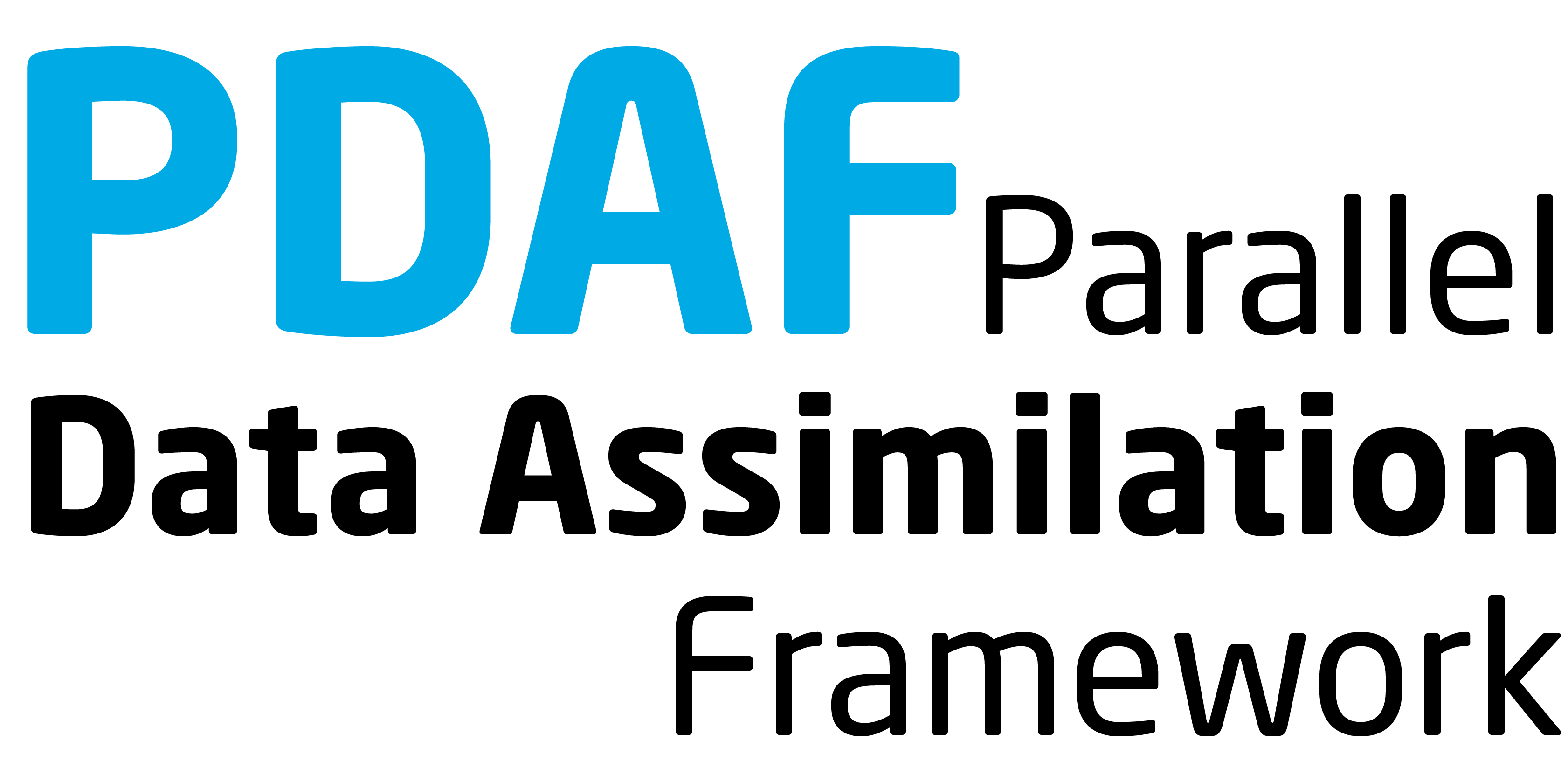| 16 | | * `init_parallel_pdaf`: This routine is inserted close to the start of the model code. If the model itself is parallelized the correct location is directly after the initialization of the parallelization in the model code. `init_parallel_pdaf` creates the parallel environment that allows to perform several time stepping loops ("model tasks") at the same time. |
| 17 | | * `init_pdaf`: This routine is added after the initialization part of the model. In `init_pdaf`, parameters for PDAF can be defined and then the core initialization routine `PDAF_init` is called. This core routine also initializes the array of ensemble states. |
| 18 | | * Ensemble loop: In order to allow for the integration of the state ensemble, an unconditional loop is added around the time stepping loop of the model. This loop will allow to compute the time stepping loop multiple times to integrate all ensemble states. PDAF provides an exit-flag for this loop. (This external loop is avoided with the ''fully-parallel'' implementation variant.) |
| 19 | | * `get_state_pdaf`: Inside the ensemble loop, a call to this interface routine is added to the code. In this routine the names of user-supplied routines are declared and the PDAF-core routine `PDAF_get_state` is called. This routine initializes model fields from the array of ensemble states and initializes the number of time steps that have to be computed and ensures that the ensemble integration is performed correctly. |
| 20 | | * `put_state_pdaf`: At the end of the external loop, the call to the interface routine `put_state_pdaf` is added to the model code. The routine declares the names of user-supplied routines and calls a PDAF_core routine that is specific for each filter. E.g., the routine `PDAF_put_state_estkf` is called for the ESTKF. This routine writes the propagated model fields back into a state vector of the ensemble array. Also it checks whether the ensemble integration is complete. If not, the next ensemble member will be integrated. If the ensemble integration is complete, the analysis step (i.e. the actual assimilation of the observations) is computed. |
| 21 | | |
| | 16 | * **init_parallel_pdaf**: This routine is inserted close to the start of the model code. If the model itself is parallelized the correct location is directly after the initialization of the parallelization in the model code. `init_parallel_pdaf` creates the parallel environment that allows to perform several time stepping loops ("model tasks") at the same time. |
| | 17 | * **init_pdaf**: This routine is added after the initialization part of the model. In `init_pdaf`, parameters for PDAF can be defined and then the core initialization routine `PDAF_init` is called. This core routine also initializes the array of ensemble states. |
| | 18 | * **Ensemble loop**: In order to allow for the integration of the state ensemble, an unconditional loop is added around the time stepping loop of the model. This loop will allow to compute the time stepping loop multiple times to integrate all ensemble states. PDAF provides an exit-flag for this loop. (This external loop is avoided with the ''fully-parallel'' implementation variant.) |
| | 19 | * **get_state_pdaf**: Inside the ensemble loop, a call to this interface routine is added to the code. In this routine the names of user-supplied routines are declared and the PDAF-core routine `PDAF_get_state` is called. This routine initializes model fields from the array of ensemble states and initializes the number of time steps that have to be computed and ensures that the ensemble integration is performed correctly. |
| | 20 | * **put_state_pdaf**: At the end of the external loop, the call to the interface routine `put_state_pdaf` is added to the model code. The routine declares the names of user-supplied routines and calls a PDAF_core routine that is specific for the DA methods. E.g., the routine `PDAFomi_put_state_local` is called for the local ensemble Kalman filters. This routine writes the propagated model fields back into a state vector of the ensemble array. Also it checks whether the ensemble integration is complete. If not, the next ensemble member will be integrated. If the ensemble integration is complete, the analysis step (i.e. the actual assimilation of the observations) is computed. |
